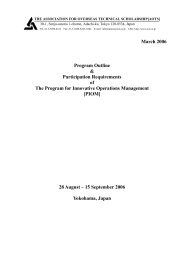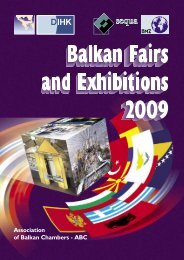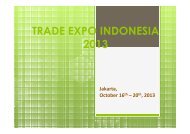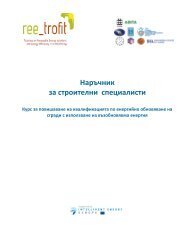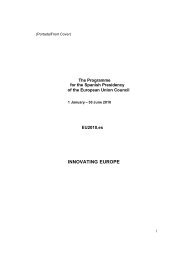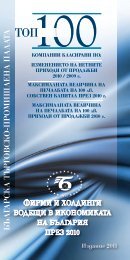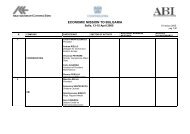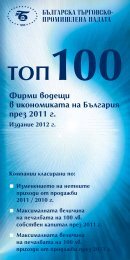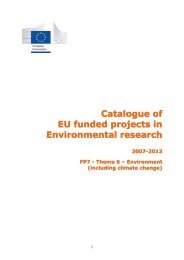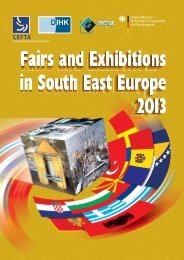Analysis of the Operation and Financial Condition of the Enterprise
Analysis of the Operation and Financial Condition of the Enterprise
Analysis of the Operation and Financial Condition of the Enterprise
You also want an ePaper? Increase the reach of your titles
YUMPU automatically turns print PDFs into web optimized ePapers that Google loves.
Terms <strong>of</strong> Reference<strong>Analysis</strong> <strong>of</strong> <strong>the</strong> <strong>Operation</strong> <strong>and</strong> <strong>Financial</strong> <strong>Condition</strong> <strong>of</strong> <strong>the</strong> <strong>Enterprise</strong>The purpose <strong>of</strong> this report is to present a financial analysis <strong>of</strong> <strong>the</strong> performance <strong>of</strong> CrescentQuarries Ltd (later referred to as <strong>the</strong> company) for years ended X3 <strong>and</strong> X4 <strong>and</strong> to comparethis to <strong>the</strong> benchmarks for <strong>the</strong> business sector for Year X4.<strong>Analysis</strong>This comprises measures as:Pr<strong>of</strong>itabilityLiquidityAssets UtilisationProductivityExecutive SummaryOver <strong>the</strong> period under review <strong>the</strong> company has increased its turnover significantly (24%)in <strong>the</strong> period under review but <strong>the</strong>re has been a downturn in overall performance in that<strong>the</strong>re has been a reduction in <strong>the</strong> primary ratio – Return on Capital Employed from 23% to19% <strong>and</strong> <strong>the</strong> analysis that follows, toge<strong>the</strong>r with <strong>the</strong> summary conclusion, highlightsclearly <strong>the</strong> areas <strong>of</strong> concern that have contributed to this adverse performance.Pr<strong>of</strong>itabilityReturn on Capital EmployedThis is also <strong>of</strong>ten referred to as return on investment (ROI).This is <strong>the</strong> main measure <strong>of</strong> pr<strong>of</strong>itability <strong>and</strong> considered <strong>the</strong> primary ratio.Capital employed is defined as total assets less current liabilities or share capital <strong>and</strong>reserves plus long term capital.The return is expressed as:Pr<strong>of</strong>it on Ordinary Activities before Interest <strong>and</strong> Tax x 100/1Capital EmployedIt represents <strong>the</strong> percentage <strong>of</strong> pr<strong>of</strong>it being earned on <strong>the</strong> total capital employed; <strong>and</strong>relates pr<strong>of</strong>it to capital invested in <strong>the</strong> business. Capital invested in a corporate entity isonly available at a cost – corporate bonds or loan stock finance generate interest payments<strong>and</strong> finance from shareholders requires ei<strong>the</strong>r immediate payment <strong>of</strong> dividends or <strong>the</strong>expectation <strong>of</strong> higher dividends in <strong>the</strong> future.It is <strong>the</strong>refore business strategy to maximise <strong>the</strong> pr<strong>of</strong>it per ‘£’ <strong>of</strong> investment.From <strong>the</strong> company accounts we find:X1X20.95:4.12 x 100 = 23.06% 0.86:4.47 x 100 = 19.24%% Return on capital employed vary widely between business sectors, research suggests <strong>the</strong>average for this business sector is approximately 21%.129



